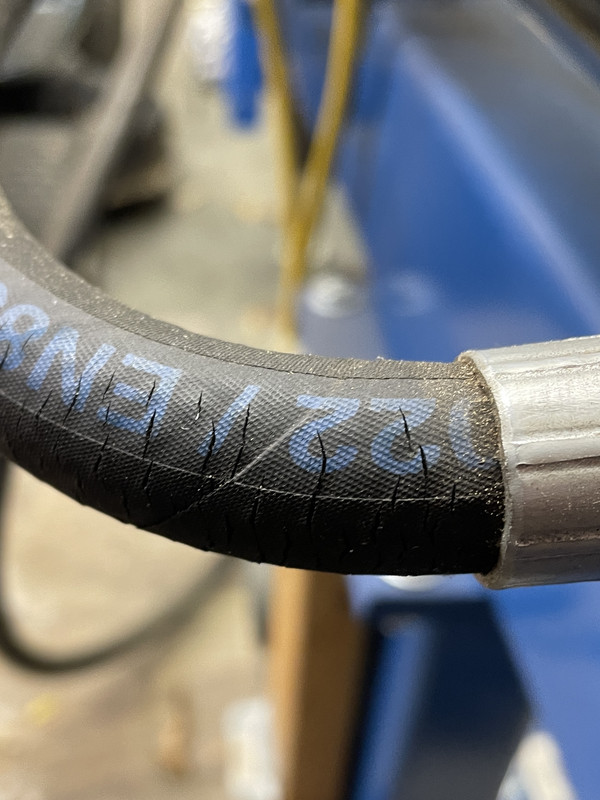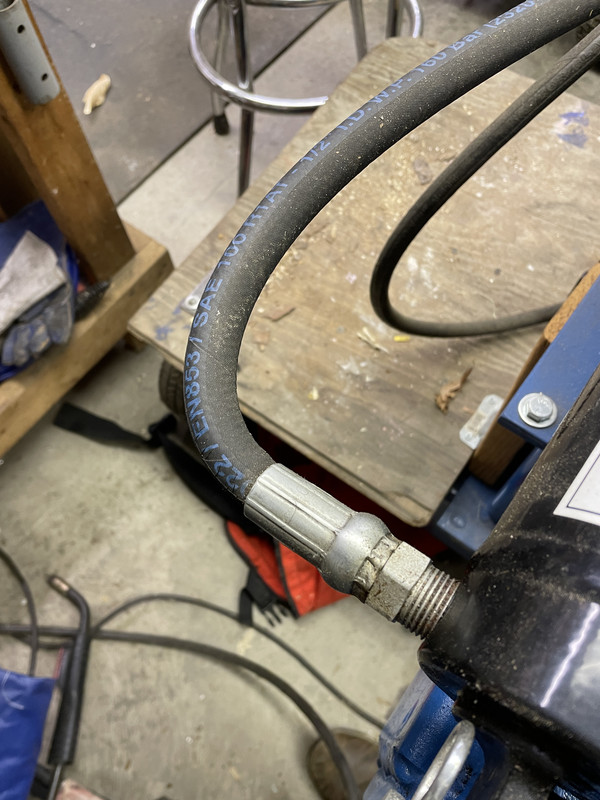So I don't know much about hydraulic lines. I noticed this line on my log splitter has some cracks in the rubber but I don't know how the lines are constructed. Are these of concern? I assume there is an inner line containing the pressure, otherwise these would already be leaking and they are not.




Last edited:

